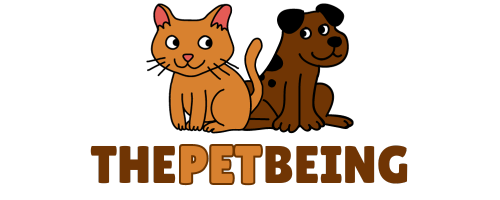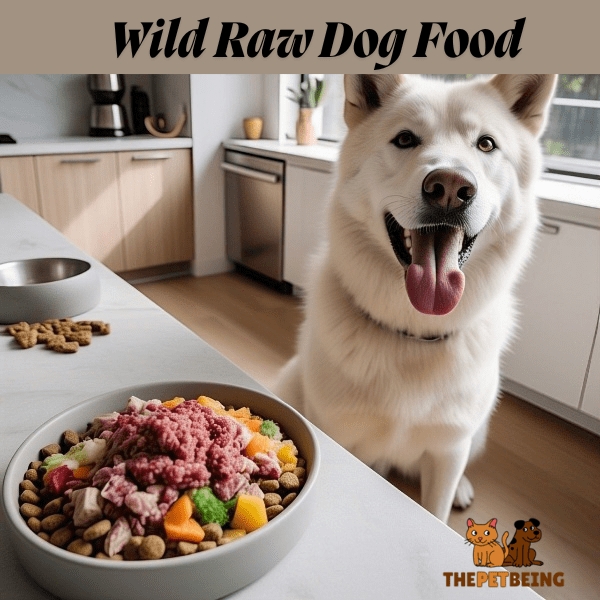Have you ever wondered what dogs ate before they became our pets? In the wild, dogs (like wolves) didn’t eat kibble or canned food like we give our pets today. They ate raw meat, bones, and even plants. This is called a wild, raw diet; some people feed their dogs this food to keep them healthy and strong.
This article will teach us all about wild, raw dog food. We’ll talk about what’s in it, why people choose it, and how it helps dogs stay healthy. If you’re curious about a specific raw dog food brand that dogs love, check out this post on Tucker Raw Dog Food: Why Dogs Love This Food. Let’s get started!
What’s in Wild Raw Dog Food?
Wild, raw dog food is just what it sounds like—raw food, just like what dogs would eat in the wild. This food includes things like raw meat, bones, and organs. Here’s a breakdown of the main ingredients:
- Meat: Dogs in the wild hunt animals, so they eat meat from animals like cows, chickens, and lambs.
- Bones: Dogs need bones to help their teeth stay clean and to get calcium for strong bones.
- Organs: Organs like the liver and heart are full of essential nutrients and vitamins that help dogs stay healthy.
- Vegetables: Some people add veggies like carrots or spinach to wild, raw dog food for extra vitamins and minerals.
The goal is to feed dogs’ food closest to what their wild ancestors would have eaten. Some believe feeding your dog this food can help them be healthier and happier.
Why Do People Choose Wild Raw Dog Food?
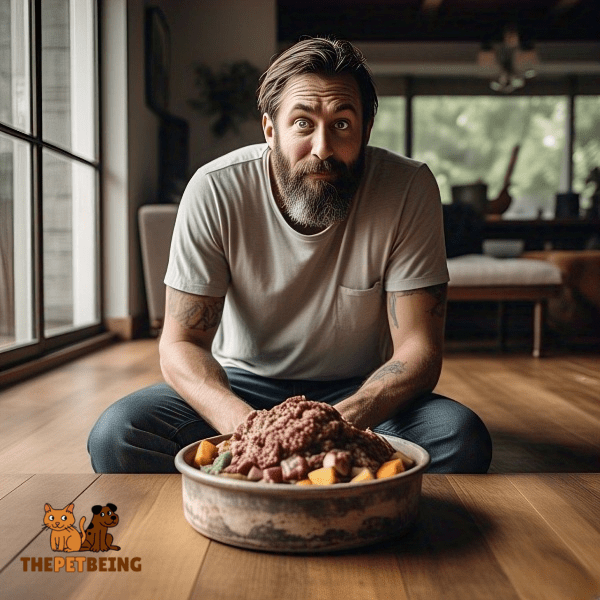
You might wonder, “Why would anyone feed their dog raw food? Isn’t that risky?” Well, there are several reasons why some people believe wild, raw food is great for dogs:
- A More Natural Diet: Like wolves and wild dogs, our pets are carnivores, meaning they need meat. A wild, raw diet is closer to what dogs eat in nature.
- Healthier Dogs: People think raw food can help dogs have shinier fur, cleaner teeth, better digestion, and more energy.
- More Energy: Raw food is packed with protein, which gives dogs more strength and energy to play and stay active.
- Less Allergies: Some dogs might be allergic to certain ingredients in regular dog food. A wild, raw diet may help reduce allergies for some dogs.
Is Wild Raw Dog Food Safe?
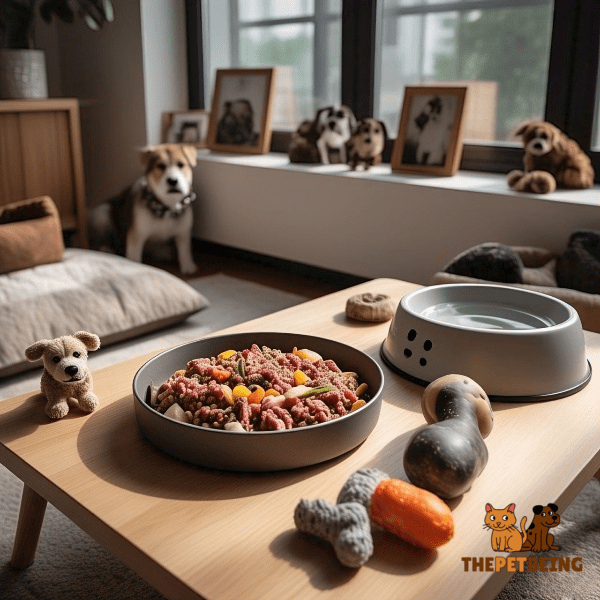
Feeding dogs raw food can be tricky, and you might wonder if it’s safe. While wild, raw food can be healthy for many dogs, it’s essential to follow some important rules to make sure it’s safe:
- Choose Good Quality Meat: The meat should be fresh and clean. It should not contain germs or bacteria that could make your dog sick.
- Safe Bones: Some bones can splinter or break into sharp pieces, which could hurt your dog. Always make sure the bones are safe and will not cause harm.
- Right Balance: To ensure your dog gets all the nutrients it needs, it’s essential to give it a mix of meat, bones, organs, and sometimes vegetables.
- Hygiene: Always wash your hands and clean the bowls after your dog eats raw food. This helps keep everything safe and germ-free.
Talking to a veterinarian (a dog doctor) before switching your dog to raw food is a great idea. They can help ensure your dog gets the right food and stays healthy.
How Do People Feed Wild Raw Dog Food?
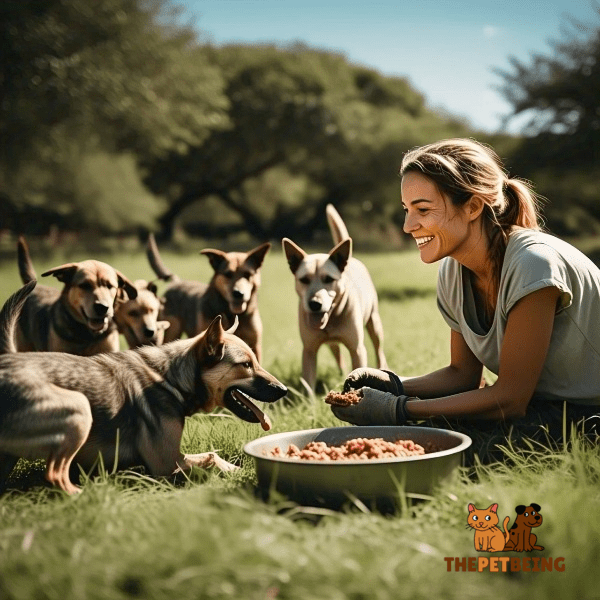
Feeding wild, raw dog food differs slightly from giving your dog regular kibble or canned food. But don’t worry, it’s not that hard! Here’s how it works:
Choose the Right Ingredients
It might come in prepared packages if you’re buying wild, raw dog food. You may also purchase the elements separately and make personal meals in your canine. You’ll need:
- Raw meat (like chicken, beef, or turkey)
- Raw bones (make sure they’re safe!)
- Organs (like liver or kidney)
- Vegetables (like carrots or spinach)
Prepare the Food
If you’re making the meals yourself, you should chop the meat and greens into small portions. This helps your dog chew and swallow easily. Some dogs prefer their food cut up, while others like it in larger chunks.
If you buy pre-packaged meals, you don’t need to prepare anything. Just open the package and serve the food!
Serve the Food
Once the food is ready, put it in your dog’s bowl. Make sure the food is fresh and at the right temperature. Some people serve the food cold, while others let it warm up a little.
After your dog is done eating, don’t forget to clean the bowl. Raw food can get messy, so keeping everything clean is essential!
Store the Food
Proper storage of raw food is essential to keeping it fresh. Store it in the fridge or freezer until it’s time to serve. Pre-packaged meals usually include storage instructions.
Fun Facts About Wild Raw Dog Food
Here are some fun and interesting facts about wild, raw dog food:
- Dogs Have Sharp Teeth for a Reason! Did you know dogs have sharp teeth to tear meat and crush bones? Their teeth are made for eating food like wild, raw meals.
- Bones Are Important: Dogs chew bones in the wild to get essential nutrients like calcium and keep their teeth clean.
- Dogs Aren’t the Only Ones Who Eat Raw Food! Wolves, foxes, and other wild animals eat raw food too! Wolves, for example, eat the whole animal—meat, bones, and organs.
- Dogs Used to Be Wild: Long ago, dogs weren’t pets. They were wild animals who hunted for food. Over time, humans and dogs became friends, and now we take care of them.
Is Wild Raw Dog Food Right for Your Dog?
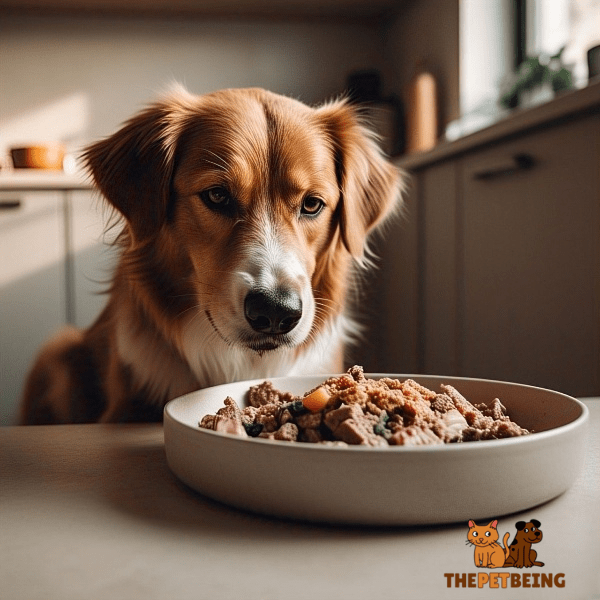
Before you start feeding your dog wild raw food, it’s essential to think about a few things:
- Age of Your Dog: Puppies and older dogs have different needs. Puppies need exceptional food to grow, and older dogs may have trouble chewing rigid bones.
- Health Concerns: Some dogs might have health problems that make raw food a lousy choice. For example, dogs with weak stomachs might not do well with raw food.
- Size Matters: Small dogs and big dogs have different food needs. Smaller dogs might need smaller pieces of food.
If you’re considering switching your dog to a wild, raw diet, ask your vet for advice. They can help you determine the best food for your dog’s age, size, and Health.
How Do You Know If Your Dog Likes Wild Raw Food?
When you start feeding your dog wild, raw food, it’s essential to watch how they react. Some dogs love it immediately, while others might need time to get used to it. Here are a few signs that your dog might like wild, raw food:
- They’re Excited at Mealtime: If your dog gets excited and can’t wait for their meal, that’s a good sign!
- They Eat Everything: If your dog finishes its food and seems satisfied, they’re happy with the food.
- Their Health Improves: If your dog’s coat gets shinier, their teeth get cleaner, and they have more energy, it’s a sign that the raw food works well for them.
Conclusion
Wild, raw dog food is a natural, healthy way to feed your dog. It includes raw meat, bones, and organs, close to what wild dogs would eat in nature. Many believe this diet helps dogs stay healthy, have more energy, and live longer lives. However, wild, raw dog food isn’t for every dog.
Before switching, talk to your vet to make sure it is the right choice for your canine’s fitness. With the right food and care, your dog can be happy, healthy, and energetic. What do you think now that you know all about wild, raw dog food? Would you like to try feeding your dog this kind of food? Ask your parents what they think too!
